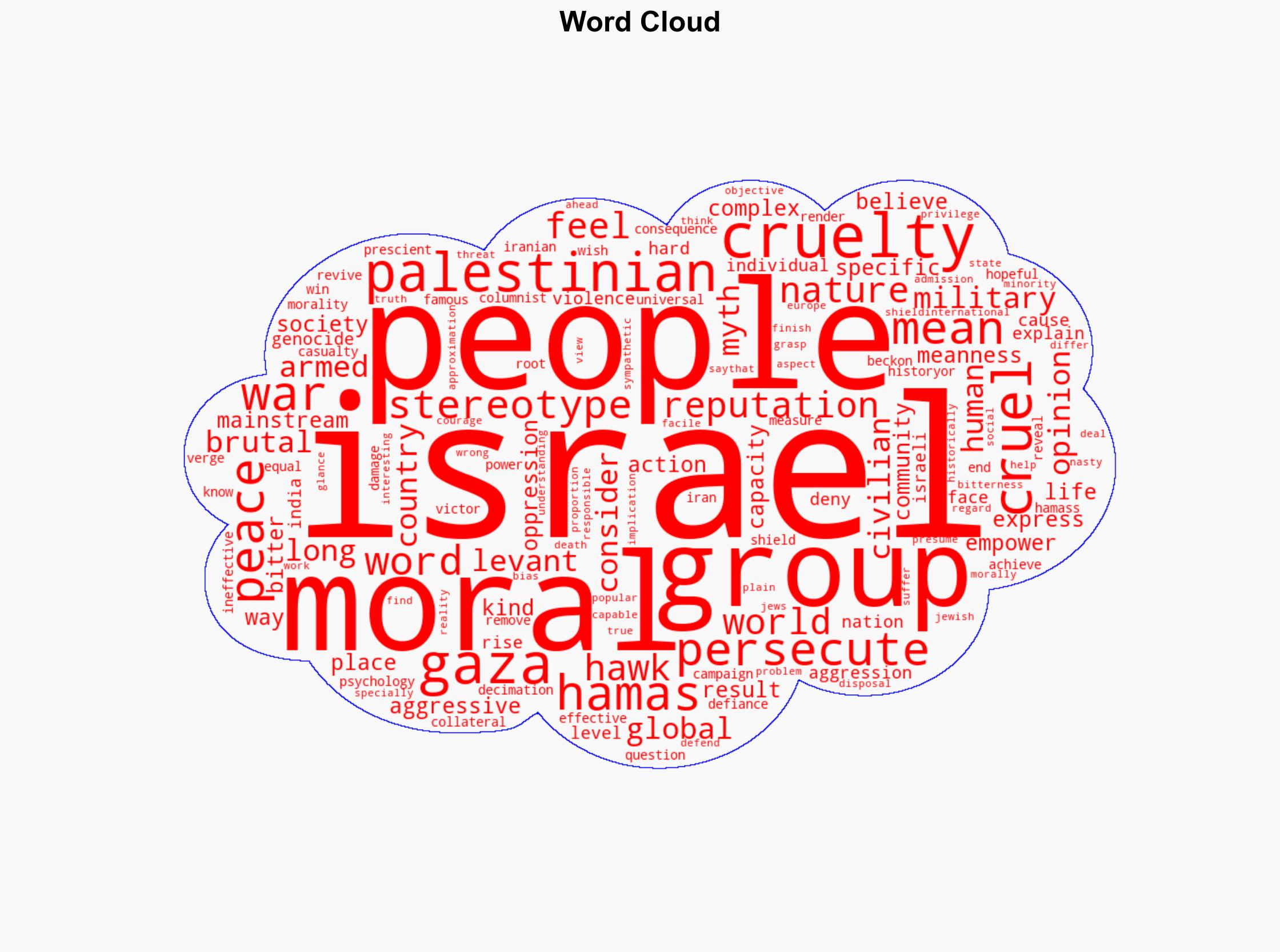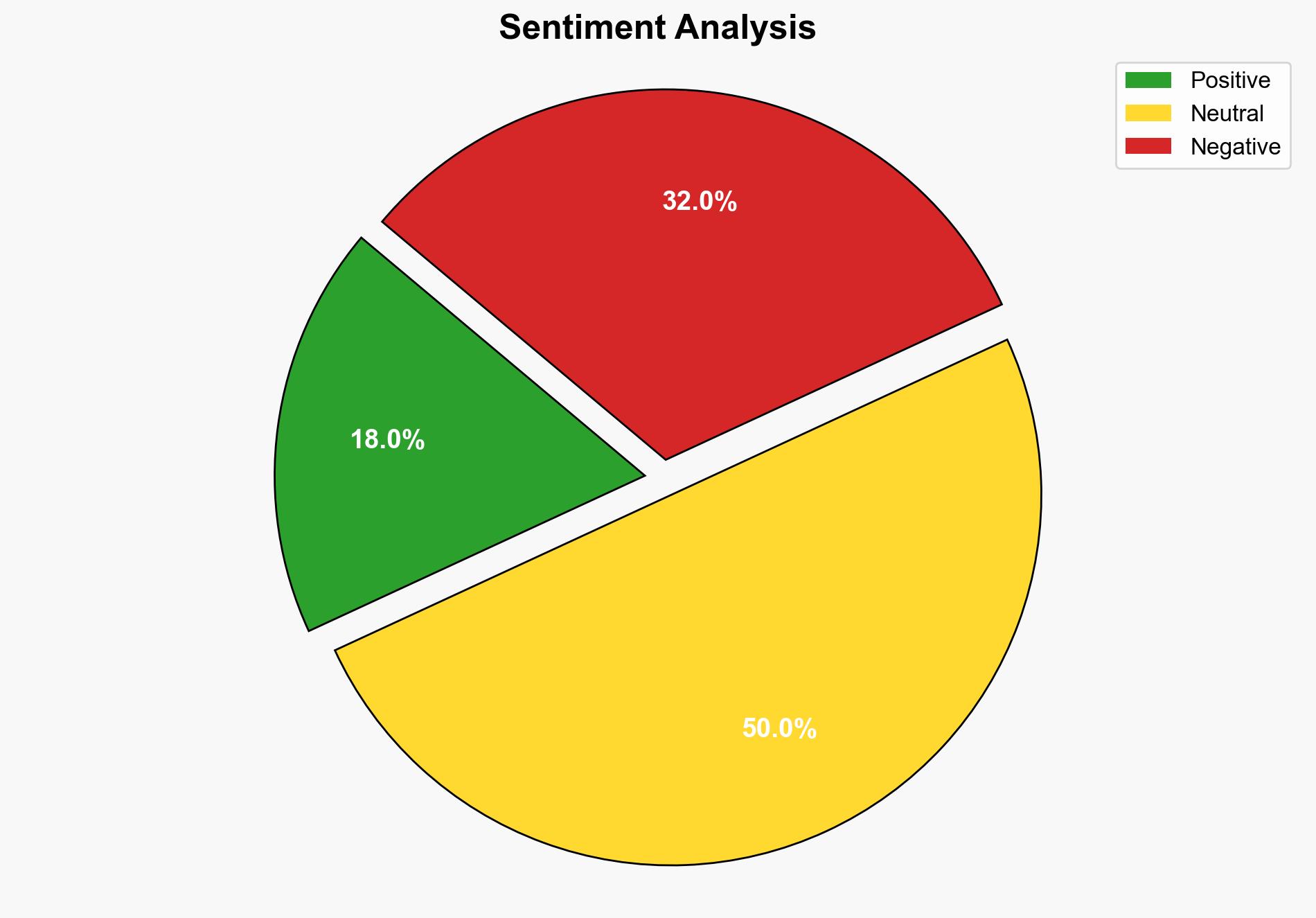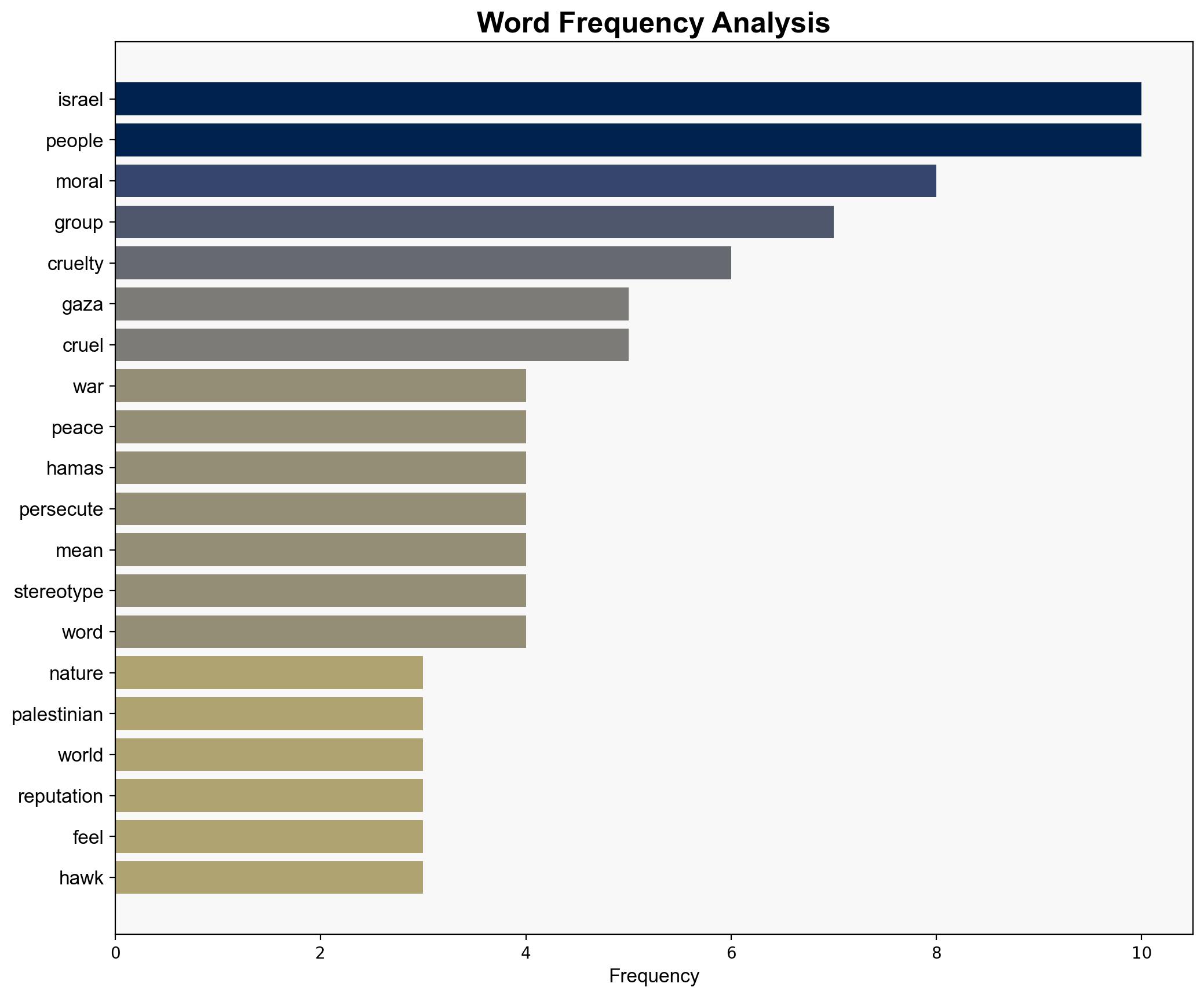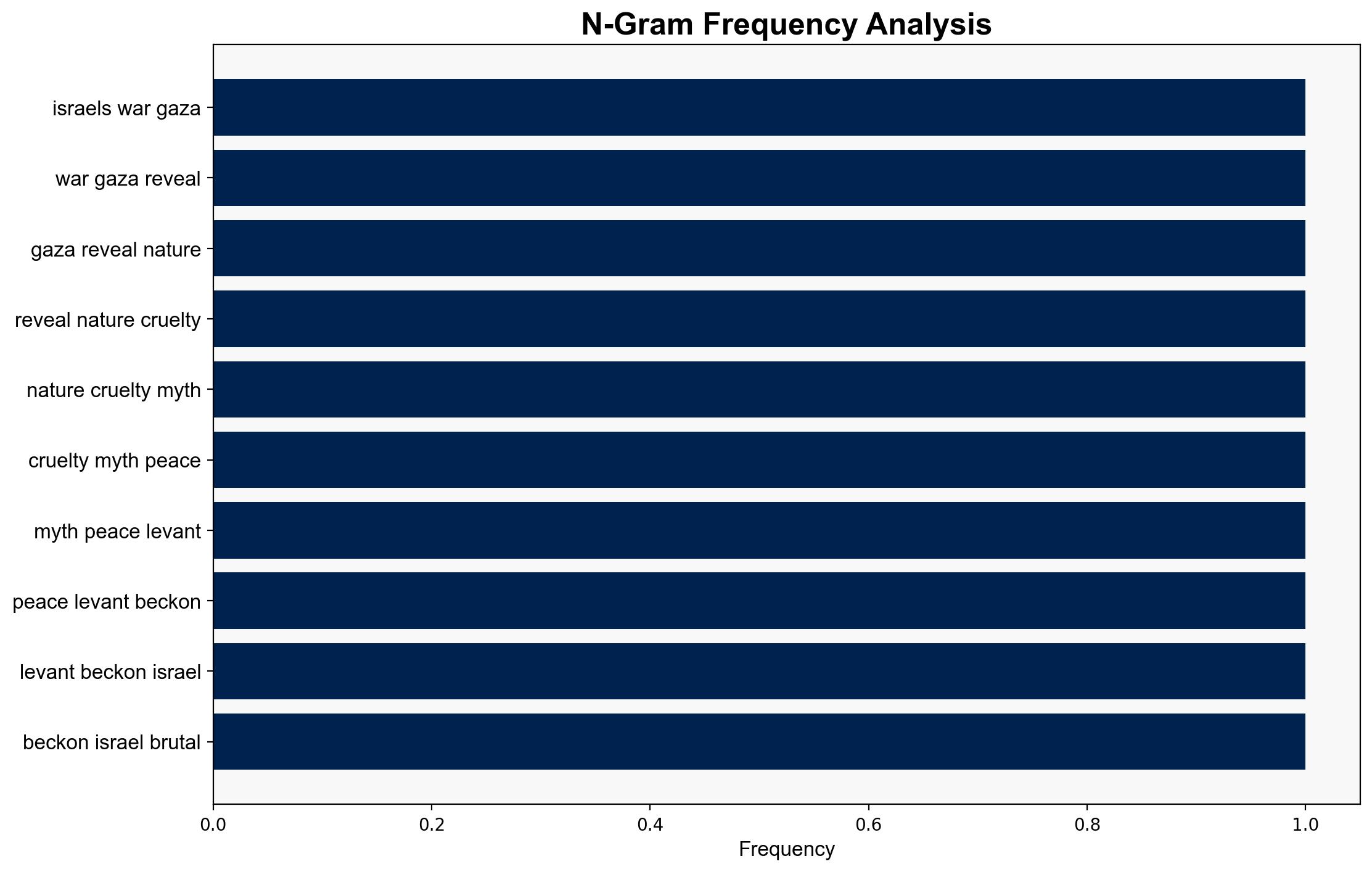What Israels war in Gaza reveals about the nature of cruelty and the myths around it – Livemint
Published on: 2025-10-12
Intelligence Report: What Israel’s War in Gaza Reveals About the Nature of Cruelty and the Myths Around It – Livemint
1. BLUF (Bottom Line Up Front)
The analysis suggests two competing hypotheses regarding Israel’s military actions in Gaza: one views it as a strategic necessity to dismantle Hamas, while the other considers it a manifestation of deeper historical and psychological factors influencing Israeli policy. The hypothesis that Israel’s actions are primarily driven by strategic necessity is better supported by the available data. Confidence level: Moderate. Recommended action: Encourage diplomatic engagement to address underlying tensions and mitigate civilian impact.
2. Competing Hypotheses
Hypothesis 1: Israel’s military campaign in Gaza is a strategic operation aimed at neutralizing Hamas as a security threat. This view posits that the actions are driven by immediate security concerns and the necessity to protect Israeli citizens from Hamas’ military capabilities.
Hypothesis 2: The military actions are influenced by historical grievances and psychological factors, reflecting a broader pattern of behavior rooted in past persecution and a perceived moral imperative to act decisively against perceived threats.
Using ACH 2.0, Hypothesis 1 is better supported by the focus on military objectives and the historical pattern of Israel’s security-driven policies. Hypothesis 2, while plausible, relies more on subjective interpretations of historical and psychological motivations, which are less directly evidenced in the current context.
3. Key Assumptions and Red Flags
Assumptions:
– Hypothesis 1 assumes that Israel’s primary motivation is security-driven, with a clear objective to dismantle Hamas.
– Hypothesis 2 assumes that historical and psychological factors significantly influence Israel’s military decisions.
Red Flags:
– Potential cognitive bias in interpreting Israel’s actions through the lens of historical victimhood.
– Lack of comprehensive data on internal Israeli decision-making processes.
– Inconsistent narratives regarding the proportionality of Israel’s military response.
4. Implications and Strategic Risks
The continuation of military operations in Gaza could lead to increased regional instability, with potential for broader geopolitical repercussions involving neighboring countries and global powers. Economic impacts could arise from disruptions in regional trade and increased defense expenditures. Psychological impacts include potential radicalization and increased animosity towards Israel in the region.
5. Recommendations and Outlook
- Engage in multilateral diplomatic efforts to de-escalate tensions and facilitate dialogue between Israel and Palestinian representatives.
- Monitor regional alliances and shifts in international opinion to anticipate potential changes in geopolitical dynamics.
- Scenario-based projections:
- Best Case: Successful diplomatic intervention leads to a ceasefire and renewed peace talks.
- Worst Case: Escalation into a broader regional conflict involving multiple state and non-state actors.
- Most Likely: Continued military engagement with intermittent diplomatic efforts, leading to a temporary reduction in hostilities.
6. Key Individuals and Entities
– Benjamin Netanyahu
– Hamas leadership
– Key international mediators (e.g., UN representatives, US diplomats)
7. Thematic Tags
national security threats, regional focus, counter-terrorism, geopolitical dynamics





